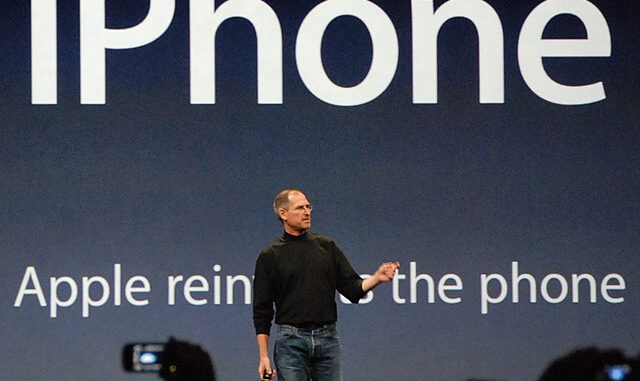
Julia Halvas | Staff Writer
The release of a new iPhone used to come with a line out the door of whatever electronics carried it. Customers would set up camp overnight just to be among the first to get their hands on the newest gadget from the brand.
Apple used to leave consumers speechless at their annual “Wanderlust” event in California. The assembly introduces the new line up of products with heavy emphasis on the iPhone. Each year, Apple releases a new lineup on phones that are “better” with “amazing new features.” For a while, Apple was able to intricately reel people in with their ads and “upgrades.”
When the iPhone 7 was released, it was the first Apple phone to be water resistant, and it had a larger camera than its younger siblings. The iPhone X had double the camera and cool software features, like portrait mode, something the iPhone 7 didn’t have.
However, their new line up of phones haven’t been making big advancements and changes like they have in previous years. The iPhone 12’s cameras were located in the same place that the iPhone 11’s were. The iPhone 13’s cameras shifted diagonally, but the body of the phone remained the same.
Apple claims on their website that the chip and battery life on the iPhone 13 is significantly better than the iPhone 12’s, however, some consumers are wondering how different these models really are and if Apple is making slight changes and advertising them as big advancements.
Compared to the iPhone 13 and 14, the iPhone 15 has Apple’s A16 bionic chip rather than their A15. Apple advertises this upgrade as a “pro-proven powerhouse” on their website. According to Unboxed by Croma, the official blog of online electronics retailer, users may not see a significant day-to-day difference in performance.
While the chip may make the phone run a bit faster when doing heavier tasks, calling it a “powerhouse” when it is only making minor changes is misleading. Compared to the previous Apple chips, there is not much of a noticeable difference as far as day-to-day use is concerned, the blog said.
It isn’t just the phone’s hardware that may leave consumers wondering if their money is being spent wisely. The software on the phone has also become a big problem for users. According to Tech Radar, many consumers have noted that after a certain amount of time, their phones have become slower or randomly stopped working altogether.
Apple has claimed that they did this in order to preserve their customers’ battery life. However, consumers still accuse Apple of purposely slowing down their phones as a way of forcing them to spend hundreds and even thousands of dollars on new products.
Apple only makes its profit on minor changes rather than truly innovating. It is important to acknowledge that consumer spending is what drives the company and keeping the consumer engaged in your product line is invaluable, not to mention the importance that trust plays in convincing people to buy your products.
Apple seems to believe that it can continue to coast off of its reputation as a trendy tech company with a unique product line. They expect consumers to continue buying its newest product to keep up with whatever tech is “popular,” as prescribed by the company itself.
Even if consumers continue to be underwhelmed with whatever the newest iPhone has to offer, they will still continue to buy them. The internet has influenced consumer spending and there is no going back.
Even if large technology companies like Apple don’t always have the best interests of their consumers in mind, it still will not stop people from continuing to purchase their products.
It is on consumers, then, to make more informed decisions when shopping for devices.
Ask yourself how much bang you’re getting for your buck. Stop to think about whether you’re supporting a company that will continue to innovate and if your buying into an ecosystem that will provide the most utility and receive the best long term support.
Consumers shouldn’t settle for the same old or planned obsolescence that Apple provides.
We shouldn’t let Apple pick what’s trending anymore. Let’s choose ourselves, and force Apple to innovate again.

